Nat and I play in the band Room 1360. My first impression of Nat, however, wasn’t based on music, but on fashion. While waiting to be let into Trinity College for my first time playing music with them, Nat appeared with a brightly dyed mohawk, wearing a black and white jigsaw pattern jacket. Immediately, I knew that I had to talk to them about more than the music.
Music can be a huge influence on fashion. Nat explains: “Music has always been a huge part of my life and music subculture has always been a huge part of my fashion. I had a very embarrassing emo phase, I’m sure a lot of people did. As a kid, I got a lot of goth and punk inspiration from my mum.”
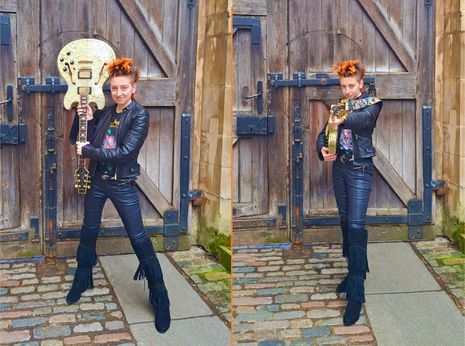
“Also, in lockdown, I got really into hyperpop ... I suddenly discovered colour and being over the top and using every clashing pattern you could find.”
“Being over the top gives me more confidence”
Having had an embarrassing emo phase and later turning to more maximalist and excessive fashion tastes, I ask Nat about the idea of dressing over the top. Nat replies: “Being over the top gives me more confidence. Adding a little bit of something slightly silly, very dramatic, something that’s got a flair to it.”
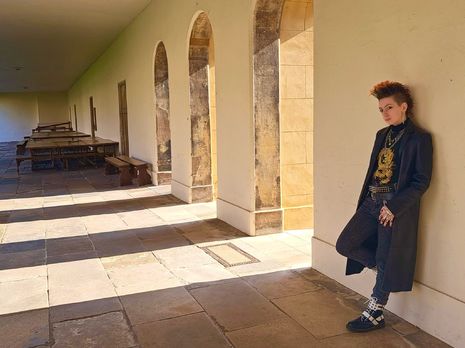
“I think it’s nice to stand out. I spent a lot of time trying to be very small, I was very quiet, and I think it adds a little bit of joy to my day to be a little bit louder with my fashion.”
For Nat, a particular event can offer a good excuse to go all out with how they dress. “Generally, I dress for an event. I’m not actually that good at having my own style, I’m cosplaying the person who goes to this thing, which I think is fun!” I like this idea of cosplay and costume and, as we keep talking, Nat reveals an interest in historical fashion that is intertwined with their musical inclinations.
“I became aware of things like silhouette and colour palette because I was designing costumes for a musical I wrote”
Speaking about what kicked off their interest in fashion, Nat recalls lockdown again: “I got into historical fashion, particularly nineteenth-century historical fashion [and] became aware of things like silhouette and colour palette because I was designing costumes for a musical I wrote.”
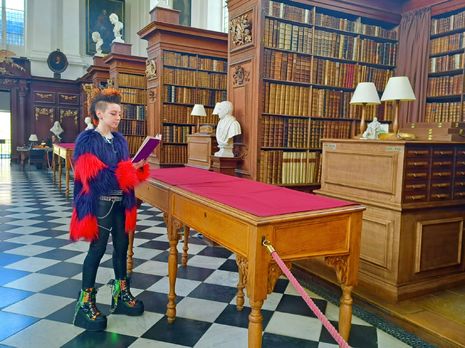
Nat’s musical was “a Pride and Prejudice spinoff about a lesbian romance between Charlotte Collins and Anne de Bourgh.” Nat recalls, “I had to research regency clothing but I wanted to incorporate some modern elements into it.”
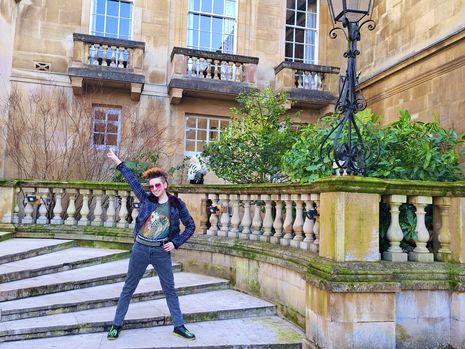
This meant linking together the “old and new”, leading Nat to understand “how silhouette was important regardless of what material was being used.” Nat began to play with regency silhouettes but mixed this with unexpected materials such as leather.

“That really helped me appreciate modern fashion because suddenly I was seeing silhouettes everywhere. That led me to realise, oh, there are all these different bits of fashion that I never even considered”. I mention that it’s like the framework of what fashion is became clear to them as they explored different decades. “Exactly! And it has inspired where I am now. I think my experimentation started with me trying to create different silhouettes.”
I ask if they have a favourite decade. Nat replies: “Aesthetically, probably the 1890s, something about the A-line skirts, the big bell sleeves, the triangular waistline. Very interestingly created with pleats in the fabric to make it look bigger so your waist looks smaller. I find that interesting because, in modern clothing, a lot of our body image and the silhouette we want to create is all from your body shape, but in the past there was so much padding! You look under the skirt and there’s like three layers of petticoats!”
“Bring back more clothes-based fashion instead of body-based fashion”
They laugh: “That’s something I think we should bring back! When big jeans got really trendy, I think that was a big move. You can wear big jeans and a small top and not have to do anything to your body to do something to your silhouette.”
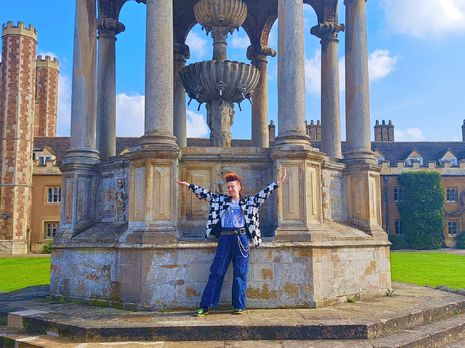
Nat captures this idea in one emphatic statement: “Bring back more clothes-based fashion instead of body-based fashion.” After all, that’s what fashion is all about.
Finally, we discuss how ‘newness’ might function and how it doesn’t have to be about new clothes. “I think a lot of fashion is actually in the construction”, Nat explains, “It doesn’t have to be that you own a million clothes and every season you buy new clothes because that’s stupid, bad for the environment and, also, I don’t have the money for that!”
“I think you can make any outfit trendy as long as you have staple pieces that you don’t throw out, and you look after them. You can make newness happen by bringing life to old pieces of clothing”. On this note, Nat tells me about personalising clothes through embroidery and painting as a fun way to breathe new life into old pieces! The resounding sentiment Nat shares is that you may as well have fun with your clothes and make them uniquely yours. What have you got to lose?


